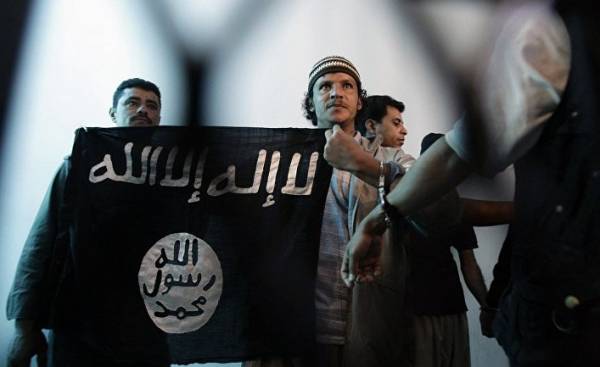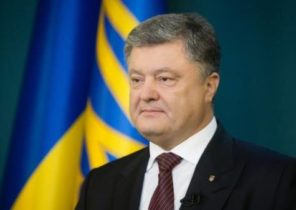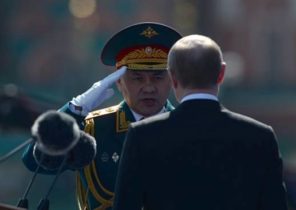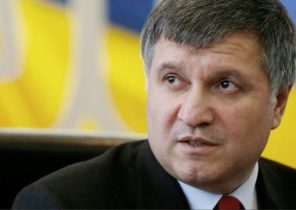
In the last two decades, jihadist terror has undergone a number of changes. Both terrorism and Jihad have existed for many years, and forms of “globalized” terror — target which is a symbolic public space, or the innocent citizens out of the account of national borders back to the anarchist movement of the late nineteenth century. An unprecedented phenomenon today is that the terrorists deliberately seek his own death.
Over the past 20 years — starting with Khaled Kelkal, the organizer of the failed terrorist attack on the Paris railroad in 1995, and ending with the participants of the RAID on Bataclan in 2015 — almost every terrorist in France blew themselves up or were killed by police. Mohammed Mera, in 2012, killed a Rabbi and three children at a Jewish school in Toulouse, changed little popular among jihadists, the expression attributed to Osama bin Laden, saying: “We love death as you love life”. Today the death of a terrorist is not a simple probability of bad consequences of his action; it is a Central part of his plan. The same enthusiasm for the death observed among jihadists, adjacent to Islamic state (a terrorist organization banned in Russia — approx. ed.). Suicide bombers perceive suicide as the ultimate goal of his mission.
Such a systematic choice of death is a recent phenomenon. The perpetrators of terrorist attacks in France in the 1970-ies and 1980-ies, regardless of the links with the Middle East carefully planned his escape. Although Muslim tradition recognizes the merits of a Martyr who died in battle, she does not welcome those who deliberately hastens to his own death, as it is contrary to God’s will. Then why for the past 20 years terrorists have remarkable consistency choose his own death? What does that say about modern Islamic radicalism? And what does that say about our current society?
The last question was particularly appropriate that such an attitude to death is inextricably linked to the fact that modern jihadism, at least in the West — as well as in the Maghreb or Turkey — there is a youth movement, which not only is independent of religion and culture of the fathers, but also rooted in the broader youth culture. This aspect of modern jihadism is extremely important.
Where would such generational hatred may arise, it also takes the form of cultural iconoclasm. The destruction affects not only people, but also statues, places of worship and books. Memory is abolished. “Start with a clean slate” — that is the goal that is common to the red guards of Mao Zedong, Khmer Rouge and ISIL militants. Wrote one British jihadist in the manual of recruitment of new members of the organization: “When we walk through the streets of London, Paris and Washington… we will spill your blood, but will destroy your statues will erase from the memory of your story and, most painful, turn to our faith to your own children, who henceforth will glorify our names and curse their ancestors”.
Although all revolutions feed on the energy and vehemence of young people, most of them are not trying to destroy the base that preceded them. The Bolshevik revolution decided to make a past heritage museums instead of raze it to the ground, and the leaders of the revolutionary Islamic Republic of Iran and in thoughts was not to blow up Persepolis.
Is a self-destructive measurement is irrelevant to the politics of the Middle East. As a strategy it is even counterproductive. Although ISIS declares its mission of restoring the Caliphate, his nihilism excludes the possibility to reach any political decisions, conduct negotiations or to build a stable society within recognized borders.
The Caliphate is a fantasy. The myth of a unified ideological education, constantly expanding its territory. Its strategic impossibility explains why identifying himself with him rather than to serve the interests of local Muslims, prefer to enter into a contract with death. There is no political perspective, no bright future, nor even a place for peace and prayer. But while the concept of the Caliphate is indeed part of the Muslim religious beliefs, this cannot be said about the pursuit of death.
Moreover, suicide terrorism is not effective from a military point of view. Meanwhile, in the “simple” terrorism when a number of determined people causes significant harm to a much more powerful enemy — you can find a certain grain of truth, it is completely absent in the attacks of suicide bombers. Use hardened fighters only once is unwise. Terrorist acts do not put Western society on its knees — they only provoke a response. And this type of terrorism today takes more lives of Muslims than the Western world.
Serial communication with death is one of the keys to understanding today’s radicalization: Central is a nihilistic dimension. Seduces and fascinates the idea of an abstract riot. Violence is not a means. It is an end in itself.
And that’s not all: it is quite possible that soon there will be other, more “rational” forms of terrorism. It is also possible that this form of terrorism is temporary.
The causes of ISIS, without a doubt, associated with middle Eastern politics, but his fall will not change the main components of the current situation. Terrorism was not invented ISIS: it is based on existing resources. The genius of ISIS in the narrative that it offers young volunteers and which meets their main requirements. So ISIS’s better if those who voluntarily wants to die — obsessed, vulnerable, rebellious by nature — will have with this movement have little in common, but readily declare the commitment of ISIS to suicide have become part of the global rhetoric.
That is why we must approach the problem of ISIS in new ways, seeking to understand modern Islamic violence along with other related forms of aggression and radicalism — those who are characterized by rebellion of the new generation, self-destruction, a complete rupture with society, estetizirovat violence, apocalyptic cults.
Too often, forget that suicide terrorism and such organizations as al-Qaeda (a terrorist organization banned in Russia — approx. ed.) and ISIS, a recent phenomenon in the history of the Muslim world and cannot be attributed to one growth of fundamentalism. We must understand that terrorism stems not from the radicalization of Islam, and the Islamization of radicalism.
I am not trying to justify Islam, but the “Islamization of radicalism” makes us wonder why and how a rebellious youth in Islam has found a paradigm for his total rebellion. This phenomenon does not deny the fact that fundamentalist Islam is evolving for over 40 years.
This approach has long been subjected to violent criticism. One scientist claims that I neglected the political causes of the rebellion: colonial legacy, military interventions of the West against peoples of the Middle East and social exclusion of immigrants and their children. On the other hand, I blame the fact that I do not consider the link between terrorist violence and religious radicalization of Islam through Salafism, the ultra-conservative interpretation of the faith. I am fully aware of all these phenomena; I am just saying that they are insufficient to explain the studied phenomena, as based on the available empirical data we cannot find any causal relationship.
My argument is that coupled with the violence radicalization is not the result of religious radicalization, even if often it is done the same way, and it borrows the same paradigm. Religious fundamentalism, of course, exists, and it is a source of serious social problems, because it denies the values based on individual choice and personal freedom. But it does not necessarily lead to political violence.
The objection that radical to encourage the action of “suffering” which had previously colonized the Muslims, and victims of racism, any discrimination, the us bombing, drones, Orientalism, etc., would mean that the insurgency is primarily driven by the victim. But relations between the radicals and victims exist more in the imagination than in reality.
Those who commit terrorist acts in Europe are not residents of the Gaza strip, Libya or Afghanistan. They do not necessarily live in poverty, humiliated or less integrated into society. The fact that 25% of jihadists are converts shows that the relationship between the radicals and their “people” is also largely an imaginary construct.
The revolutionaries almost never come from the oppressed classes of society. Their identification with the proletariat, “the masses” and colonized peoples have a choice, not based on their actual situation, and something else. Very few terrorists or jihadists share the details of his life. Usually they talk about what they had seen the suffering of others. In the hall “Bataclan” fire was opened not the Palestinians.
Until the mid 1990-ies most of the international jihadists were immigrants from the Middle East and fought in Afghanistan before the fall of the Communist regime there in 1992. They then returned everyone to their homeland to take part in Jihad or continued business abroad. It was the people who organized the first wave of “globalized” attacks (the first attack attempt on the world trade center in new York in 1993, on US embassies in East Africa in 1998 and the USS Cole in 2000).
Mentors of the first generation of jihadists was made by bin Laden, Ramzi Yousef and Khaled Sheikh Mohammed. However, since 1995 it has formed a new formation of the jihadists — known in the West as “homegrown terrorists”.
Who are these new radicals? Many of their names are known to us thanks to the police, to establish the identity of the perpetrators of the terrorist attacks in Europe and the United States. More terrorists have been caught in the early stages of the attacks. We also have all of the biographical data collected by the journalists. To trace the life path of terrorists, there is no need to take painstaking collection of materials on the ground. All data and profiles are available.
When it comes to understanding their motives, we have the fragments of their statements: tweets, Google chats, Skype chats, WhatsApp messages and Facebook. They call their friends and family. Before they die, they make statements and leave wills in the video. In short, even if we have no confidence that we understand them, we are made aware of them.
We certainly have more information about the lives of terrorists active in Europe than jihadists who go abroad and never come back. But, as shown by the analysis of the French jihadists killed in Syria, among these groups have much in common. Here I will focus primarily on the Franco-Belgians, who mostly fill the ranks of Western jihadists. Meanwhile, Germany, UK, Denmark and the Netherlands also have significant groups in advanced positions.
Using this information, I have collected a database of about a hundred people who over the last 20 years has been involved in the terrorism in France or left France and Belgium to take part in the global Jihad. It includes performers of all the major terrorist attacks in France or Belgium.
We do not find here a standard profile of a terrorist, but we find recurring characteristics. The first conclusion to be drawn is that over the last 20 years these profiles are virtually unchanged. The first home-grown French terrorist Khaled Kelkal and brothers Koichi (Charlie Hebdo, Paris 2015) have several features in common: the second-generation immigrants; at first rather well integrated; then follows a period of petty crimes; radicalization in prisons; the attack and death with weapons in their hands during confrontations with the police.
Another characteristic inherent in all Western countries, is that almost all the radical “re-established in the faith” Muslims who, having lived a completely secular life, with regular trips to the clubs, drinking alcohol, petty offenses, all of a sudden return to religion either individually or in small groups. Abdella brothers were the owners of the bar in Brussels and went to Nightclubs over several months that preceded the slaughter in the hall “Bataclan”. Most of them start to act within several months after his first re or religious “treatment”, but by the time the rule is already showing signs of radicalization.
In almost every case, the processes accompanying the formation of radical groups, roughly similar. The group is always the same: brothers, childhood friends, friends who met in prison or in training camp. Also struck by the number of involved brothers and sisters.
Such a large number of brothers and sisters is not observed in any other context, radicalization, whether far-left or Islamist groups. This underlines the importance of the generational factor of radicalization.
As he wrote to a former jihadist David Vallat (David Vallat), the rhetoric of radical preachers can effectively be reduced to the following: “the Islam of your father is what is left after the colonizers, Islam those who bows his head and obeys. Our Islam is the Islam warriors of the blood, resistance.”
In fact, the radicals are often orphans, like the brothers Quasi — or grew up in dysfunctional families. Their rebellion is directed not necessarily against the parents personally, rather against what they associate their fathers ‘ humiliation, concessions to society and what is perceived as religious ignorance.
New radicals in the most part deeply immersed in the youth culture: they go out to night clubs, “hitting on” girls, smoke and drink. According to the database collected by me, about 50% of jihadists in France, has behind him a history of petty crimes, mostly drug trafficking, but there are acts of violence, and less armed robberies. A similar figure is observed in Germany and the United States — including the unexpectedly frequent cases of arrests for driving under the influence. Their style meets modern youth fashion: brand, caps, hoods, in other words, street clothes are not necessarily even of the Islamic variety.
In their musical preferences they are also in step with the times: I like rap and club music. One of the most famous radicals — the German rapper Denis One, known as Deso Dogg, and then as Abu Talha al-Almani, who went to fight in Syria. Of course, they are also not averse to gamble and love American fighters.
Judging by the clashes between youth groups in Marseille, their propensity to violence could find a way not only to Jihad and terrorism. Their energy is able to direct its own course or some institution — Mohammed Mera was going to enlist in the army or sport. One group of converts of the Portuguese, most of whom were Angolan by birth, left London to join ISIS after he has friends in the Thai Boxing club, organized by British non-governmental organization. Combat sports clubs in public life are more important jihadist mosques.
The language spoken by the radicals, is always the language of the country in which they live. In France after the conversion to the faith, they often go to the Salafi version of the French spoken the outskirts of the city.
In prison they have contacts with radical “peers” who have a very distant relationship to any official religion. Prison reinforces many of the factors that fuel the modern radicalization: a generational aspect; rebellion against the system; dissemination of simplified version of Salafism; the formation of a cohesive group; search dignity associated with compliance with standards; and a new interpretation of the crime as a legitimate political protest.
Another common feature is the distance that separates the radicals from their immediate environment. In fact in a religious environment they had never lived. Relations with the local mosque they were rather ambiguous: either they showed up sporadically, or are expelled for showing disrespect to the local Imam. None of them belonged to the “Muslim Brothers”, none of them worked in the Muslim charitable organizations, none of them were engaged in proselytizing, no one was a member of the Palestinian solidarity movement, and finally one of them, as far as I know, was not involved in the riots that broke out in French suburbs in 2005. They are not subjected to the radicalization of religious movements before to turn to terrorism.
If religious radicalization had taken place, she was not within the Salafi mosques, but individually or within the group. The only exceptions occur in the UK, where the network of militant mosques frequented by members of the “al-Muhajiroun”, a group which has led to the emergence of more radical Sharia4UK, led by Angemon Chudai. So the question is, when and where jihadists take the religion. Religious fervor erupted outside the social structures, belatedly, quite suddenly and shortly before the terrorists begin to operate.
To summarize: a typical radical — he is a young second generation immigrant or convert, are often subjected to criminal prosecution, with virtually no religious education, but the last fast and the recent path of the first or re-conversion, which most often occurs in a group of friends or through the Internet, not in mosques. The appeal to religion is rarely kept secret, rather it is paraded, but do not necessarily involve immersion in religious practice. The rhetoric of rebellion is the aggressive nature of the enemy is wrong, attitude which is not acceptable compromise, but it also turns on its own family, the members of which are accused of inappropriate attitudes to Islam or refuse treatment.
At the same time, it is clear that the decision of the radicals to identify themselves with Jihad and claim belonging to a radical Islamic group is not just an opportunistic choice: the reference to Islam is a key difference between Jihad and other forms of violence that sin young.
The indication of this widespread culture of violence is not tantamount to “justification” of Islam. The fact that these young people choose Islam as a conceptual framework for their own thoughts and actions, is extremely important, and we should strive to understand the Islamization of radicalism.
In addition to the General characteristics discussed above, the radicals not typical for all social and economic status. There is a popular and rather simplified explanation, according to which terrorism is seen as the result of a failed integration — and therefore as a harbinger of the civil war — nobody can not think to remember a large number of well-integrated and socially successful Muslims. For example, France has far more Muslims involved in the police and security forces than in the Jihad, and it is an undeniable fact.
In addition, the radicals do not come from Orthodox communities. The Brussels bar brothers Abdeslam was in the area, which is considered a Salafi — and thus access to it would be closed to people who drink alcohol and women not wearing the hijab. But this example shows that the reality of these areas is more complicated than we think.
Very often jihadism is regarded as a continuation of Salafism. Not all Salafis are jihadists, but all jihadists are believed to be Salafis, because Salafism there is a kind of gates of jihadism. In short, religious radicalization is the first step in political radicalization. But, as we have seen, is more complicated.
It is clear, however, that these young radicals are sincere believers: they believe that after death will be in heaven, and their views are deeply rooted in Islam. They join organizations that want to establish an Islamic system or even, in the case of ISIS to restore the Caliphate. But what sort of Islam are we talking about?
As we can see, the jihadists do not get aggressive after the reading of the sacred texts. They do not have the necessary religious culture — and, most importantly, little care about it. They do not become radicals because of misunderstood texts or become the objects of manipulation. They are radicals because that is their own choice, because radicalism attracts them. No matter what the database is taken as a basis, the paucity of religious education among the jihadists catches the eye immediately. According to the leaked documents, ISIS containing data on more than four thousand foreign recruits, while most of the fighters are well-educated, 70% report that they have only a basic knowledge about Islam.
Here it is important to distinguish between the version of Islam followed by ISIS itself and which to a much greater extent based on methodological traditions of interpretation of the words of the prophet Muhammad and supposedly on the writings of “theologians” — and Islam claiming allegiance ISIL jihadists, which primarily revolves around the notions of heroism and modern violence.
Biblical interpretation, which filled pages “Debica” and “Dar al-Islam”, the last two of the journals ISIS, published in English and French, or lead to radicalization. Rather, they give the violence of radical theological basis — which is based not on real knowledge but on appeal to authority. When young jihadists talk about “truth”, they never mean conceptual knowledge. They Express their own confidence, sometimes backed by indirect reference to the sheikhs who never read it. So, convert the Frenchman Cedric said in court: “I am not a computer jihadist, I was not converted through YouTube. I read the works of theologians, theologians of the present”. He said that, although he did not know how to read Arabic and met members of his network through the Internet.
Probably, it makes sense to start with, to listen to the words of the terrorists themselves. In their confessions they sound about the same thoughts, summarized in a posthumous statement from Mohammad Siddique Khan, the leader of the group that committed the London bombings on 7 July 2005.
Explaining the motives of his actions, he first refers to the atrocities committed by Western countries against the “Muslim people” (he uses the expression “my people all over the world”); secondly, he assumes the role of hero-the avenger (“I’m directly responsible for, to protect my Muslim brothers and sisters and to avenge them,” “Now and you will come to know the reality of this situation”); third, in his speech mentioned death (“We love death as much as you love life”) and acceptance of him in heaven (“let Allah take me to those whom I love like the prophets, messengers, martyrs”).
The nature of the Muslim community that the terrorists so crave revenge, is almost never specified. This kind of freestories and spaceless reality. When the jihadists criticized Western policy in the middle East, they use the term “crusaders”, they don’t mean the French colonization of Algeria.
Radicals never openly refer to the colonial period. They reject or ignore all political and religious movements that came before them. They do not show solidarity with their fathers and their struggle; almost none of them returned to their homeland to wage Jihad. It is noteworthy that none of the jihadists, regardless of whether he was born a Muslim or had converted to this faith, as far as I know, not campaigning within the Pro-Palestinian movement and was not involved in any society against Islamophobia, or even Islamic NGOs. These radical young people read texts in French or English, circulating in the Internet, works in the Arabic language they were not familiar with.
Oddly enough, the apologists of the “Islamic state” never talk about Islam and about Islamic society that will be built with the assistance of ISIS. Those who argue that went to Syria because he wanted “to live in a truly Islamic society,” are usually those who denied their involvement in local violence, as if to wage Jihad and live according to the laws of Islam are two incompatible aspirations.
And in a sense it is, because life in Islamic society, the jihadists do not care: they go to the middle East in order to live and to die. This is a paradox: these young radicals are not utopians, they are nihilists.
The most radical feature of this new formation in comparison with the previous generations of revolutionaries, the Islamists and Salafis is their hatred of the existing societies, whether Western or Muslim. This hatred is embodied in the pursuit of their own death while committing mass murder. They kill themselves along with the world that rejected. Since September 11, 2001 for radicals this is the preferred course of action.
Sadly, killer bomber is a common phenomenon in the modern world. A typical example is American, the perpetrators of violence at school: he’s fully armed went to school, indiscriminately killing the largest possible number of people and then kills himself, or allows a COP to do it. By the time he had already published the photos, videos and statements on the Internet. In them, he exposes himself as a hero and enjoys the fact that now the whole world will speak. In the period 1999 to 2016 in the United States was committed 50 attacks or attempts of such attacks.
It is clear that the border passing between such a mass murderer bomber and fighter for the Caliphate, is quite uncertain. So, the perpetrators of terrorist acts nice at first was called mentally ill, and then a militant of the ISIL committed a premeditated crime. Meanwhile, these ideas do not exclude one another.
It is important not to mix all of these varieties. Each of them has its own characteristics, but, surprisingly, all the mass murders committed by young nihilists with suicidal tendencies, there was a common thread. Importantly, suggest that the organization of the “al-Qaeda” ISIL is a scenario of action.
Force ISIS to play on our fears. And the main fear is the fear of Islam. The only strategic effect of these attacks is their psychological impact. They do not affect the military potential of the West; rather, contribute to its strengthening, ending with the cuts in the military budget. They have a small economic effect and threaten our democratic institutions only to the extent that we ourselves put them into question in the course of the eternal discussions about the conflict between security and the rule of law. We are afraid that will collapse our own society and between the Muslim world and “others” will start a civil war.
We ask ourselves, what he wants is Islam, what is Islam, and not realize that the world of Islam does not exist; that the world Muslim community at best is a pious desire, and at worst an illusion; that the conflict in the first place and for the most part relate to the Muslims; that the main issue of these conflicts is the policy; that national issues will remain the key to the Middle East, and social issues — the key to integration.
Of course, ISIS, like al Qaeda, has created an incredible scale dummy system where appears in the role of conqueror, causing the defeat of the West. Like all millennial ideology, it is a Grand fiction.
But, in contrast to the major secular ideologies of the twentieth century, jihadism has a very narrow social and political base. As we have seen, he does not mobilize the masses, but only attracts those who are on the periphery.
It is tempting to see in Islam a radical ideology that mobilizes many representatives of the Muslim world similar to how the Nazis were able to mobilize considerable segments of the German population. But the reality is that the claims of ISIS on the establishment of a world Caliphate are misleading — that’s why it attracts violent adolescents suffering from delusions of grandeur.
The article is an edited excerpt from the book Olivier Roy, “Jihad and death: the appeal of Islamic state to the world” (Jihad and Death: The Global Appeal of Islamic State), published by Hurst.







